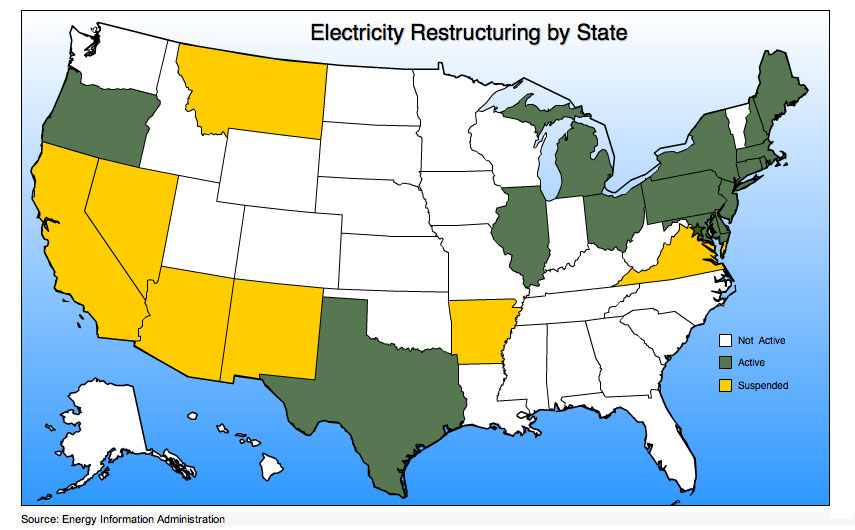Education > Electricity Deregulation
The Deregulation (or Restructuring) of Electricity Markets.
The map below indicates which states have some form of electricity deregulation. By definition, pure deregulation would mean that all consumers would be required to purchase their electricity supply – that is, their power generating source – separate from the distribution company (their local utility). However, in just about every state where consumers have the ability to choose their supply (generation), there also exists an opportunity to fallback, or purchase generation from the local utility company. Sometimes, this is a good option for consumers, but it is often not the best choice.

In states where consumer choice exists due to deregulation, the local utility companies are often referred to as local distribution companies (or LDCs). These LDCs, who were once vertically integrated utilities, either sold off their generation assets (i.e. power plants) to non-utility generators, or split the assets off from their utility business creating a separate non-utility generator subsidiary.
Deregulation has separated the functions of what were once vertically integrated utilities creating a market for supply, (or power generation) which is OPEN to market competition.
